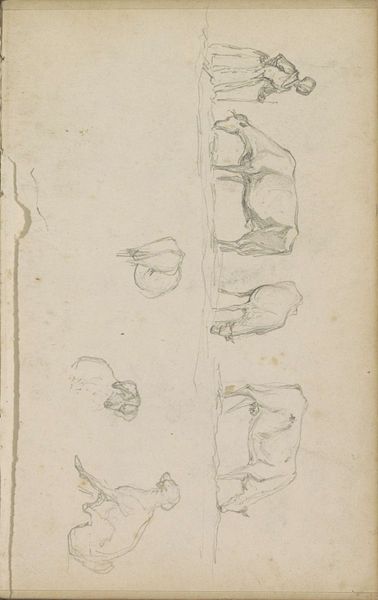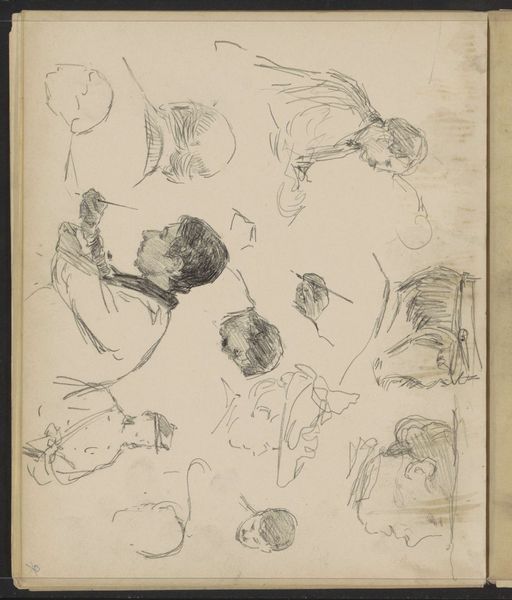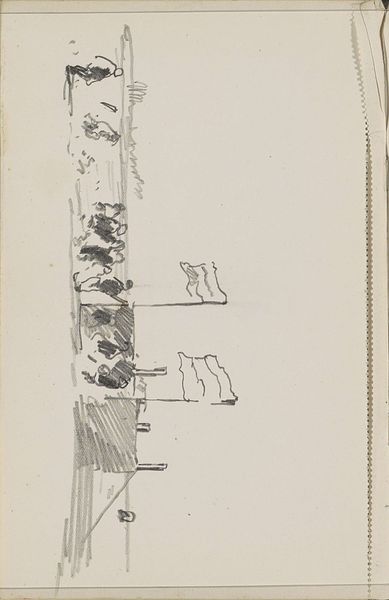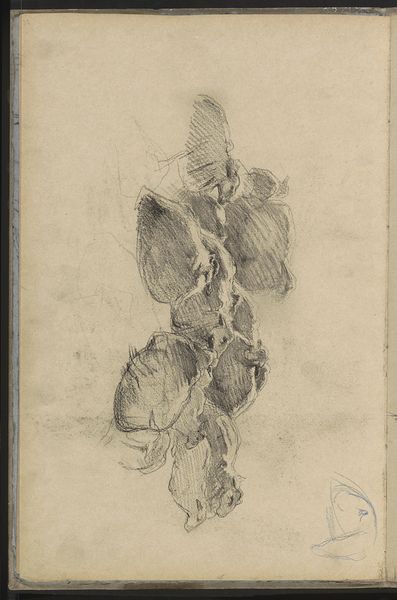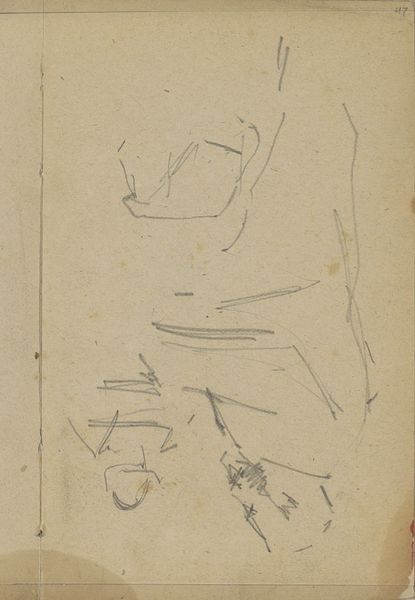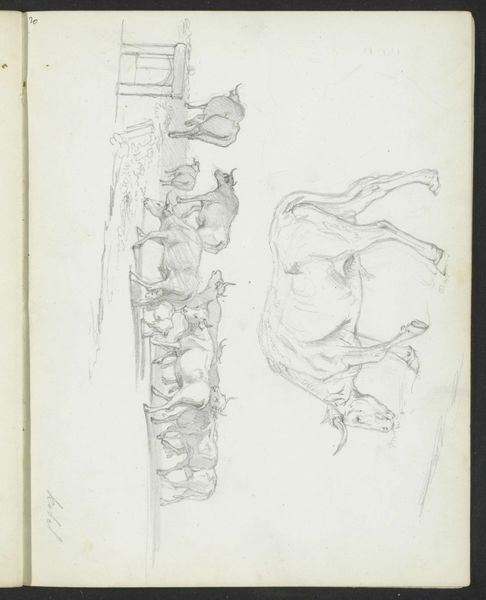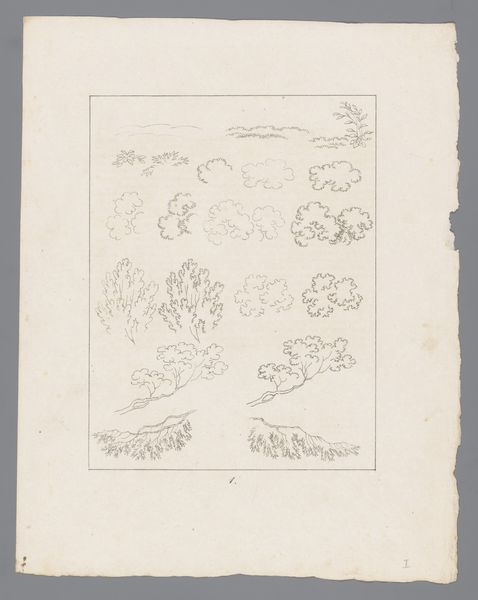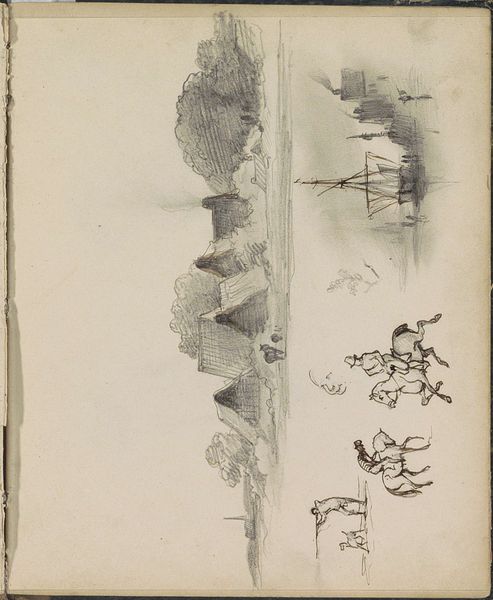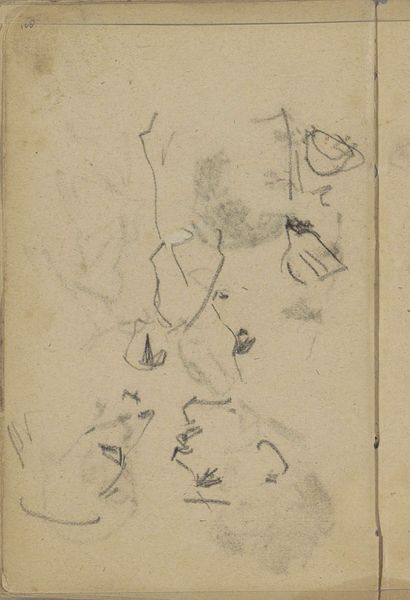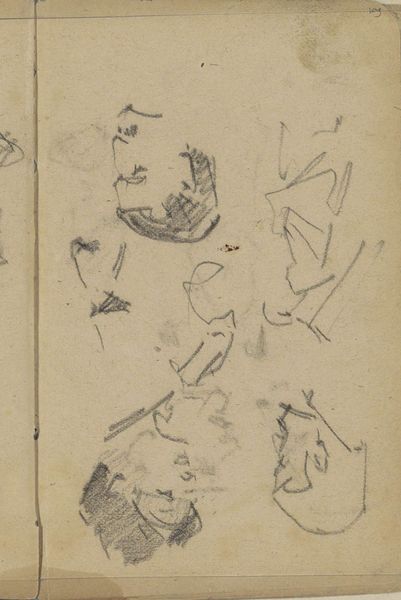
Copyright: Rijks Museum: Open Domain
Editor: This is "Studieblad met gezichten en zittende figuren," a study sheet of faces and seated figures, created by Isaac Israels between 1921 and 1922. It's a graphite drawing, and it almost feels like peering into the artist’s private thoughts, seeing these fleeting glimpses of people. What do you see in this piece? Curator: What strikes me is the sheer immediacy of it. As a study, it's inherently linked to the art academy, and therefore the entire institutional apparatus surrounding artistic training at the time. Consider the shift towards modernism—artists were actively questioning traditional methods. Editor: So, a rejection of academic polish? Curator: Precisely. The looseness, the unfinished quality, speaks to a different kind of artistic value. It moves away from the perfectly rendered, towards the suggestive and the experiential. Also, how might this sketchbook relate to Israels' larger social world? Editor: He captured daily life, didn't he? The figures seem so informal, almost candid. Were sketchbooks like this part of an artistic trend, or was it personal to Israels? Curator: Both. The sketchbook became a vital tool for many Impressionist and Modernist artists to capture modern life rapidly, and that in itself represents a major cultural shift: a desire to represent fleeting, everyday moments. And the decision to make a study sheet like this available says something about shifting public perceptions about how art is made, no? Editor: Definitely! It's like showing the working process. I learned a lot. The drawing reveals not just the artist's skill but a deliberate choice to challenge established norms, and what we now consider the ‘raw process’ is key. Curator: Absolutely. We see art's public role evolving in these intimate glimpses into the artist's practice.
Comments
No comments
Be the first to comment and join the conversation on the ultimate creative platform.
